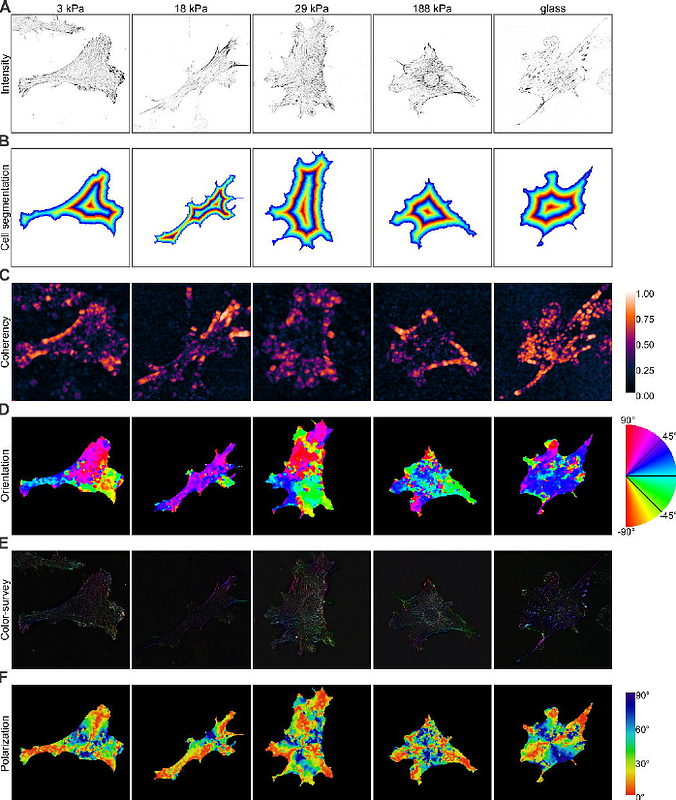Talin1 adhesions' morphology is largely unaffected by polyacrylamide substrate stiffness

Talin1 adhesions' morphology is largely unaffected by polyacrylamide substrate stiffness
Hajduk, J.; Twardawa, P.; Rajfur, Z.; Baster, Z.
AbstractCells sense the stiffness of their extracellular matrix (ECM) and adapt their behavior accordingly. We investigated how ECM stiffness affects the spatial organization of talin1, a key mechanosensitive focal adhesion protein. Using polyacrylamide (PA) hydrogels with tunable stiffnesses (0.2-188 kPa), we analyzed cell morphology, migration, talin1 distribution, colocalization with tensin3, and fibronectin deposition. Softer substrates enhanced filopodia activity and altered migration behavior. On softer ECMs, talin1 displayed a more even intracellular distribution, whereas on stiffer matrices it localized to the cell periphery. PA gels supported elongated talin1-based adhesions, whose morphology showed minimal variation across the 3-188 kPa stiffness range. Talin1-tensin3 colocalization was maintained regardless of stiffness, indicating a stable interaction. Notably, cells deposited more fibronectin on softer substrates. While talin1 adhesion morphology varied little with stiffness, cell migration behavior changed markedly. Combined with prior studies, our data suggests that ECM stiffness regulates talin1 primarily through conformational changes rather than macroscopic adhesion remodeling. These findings highlight talin1's central role in translating mechanical cues into dynamic cellular responses.